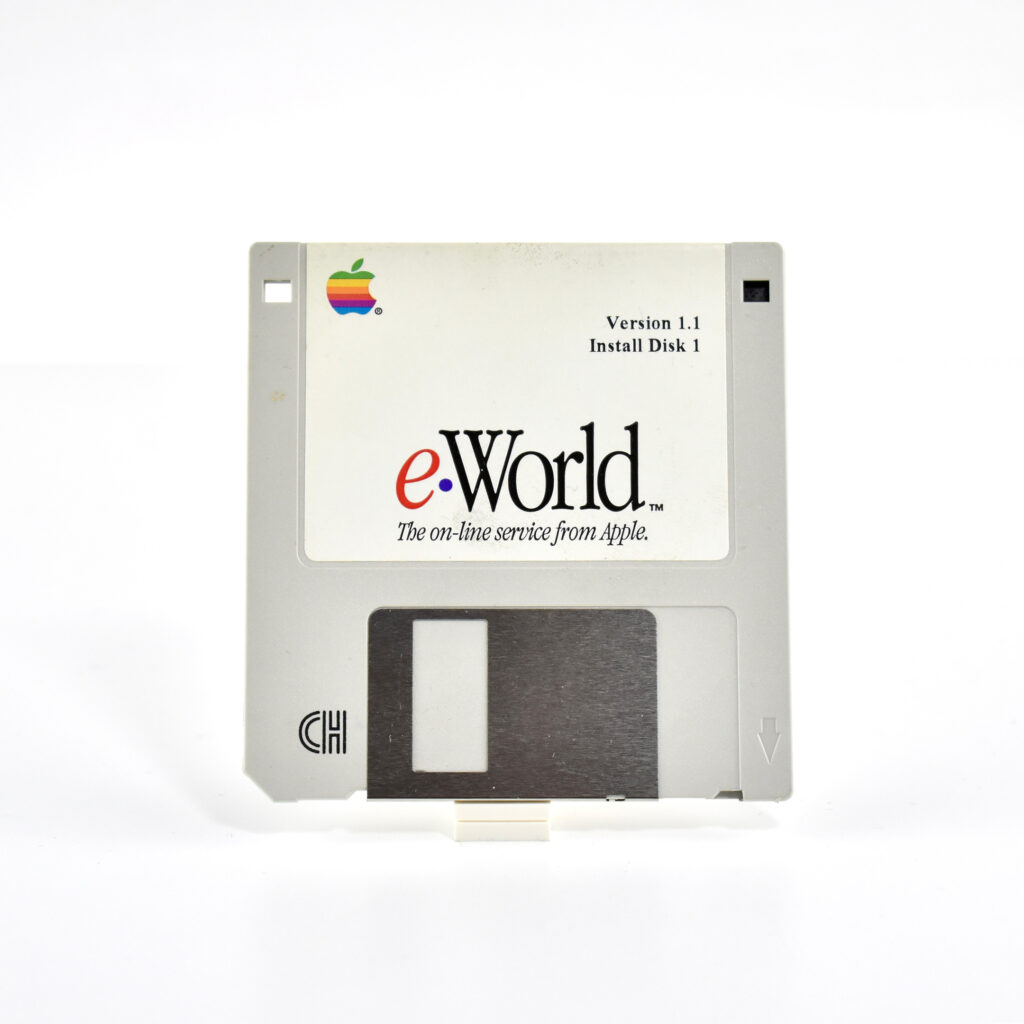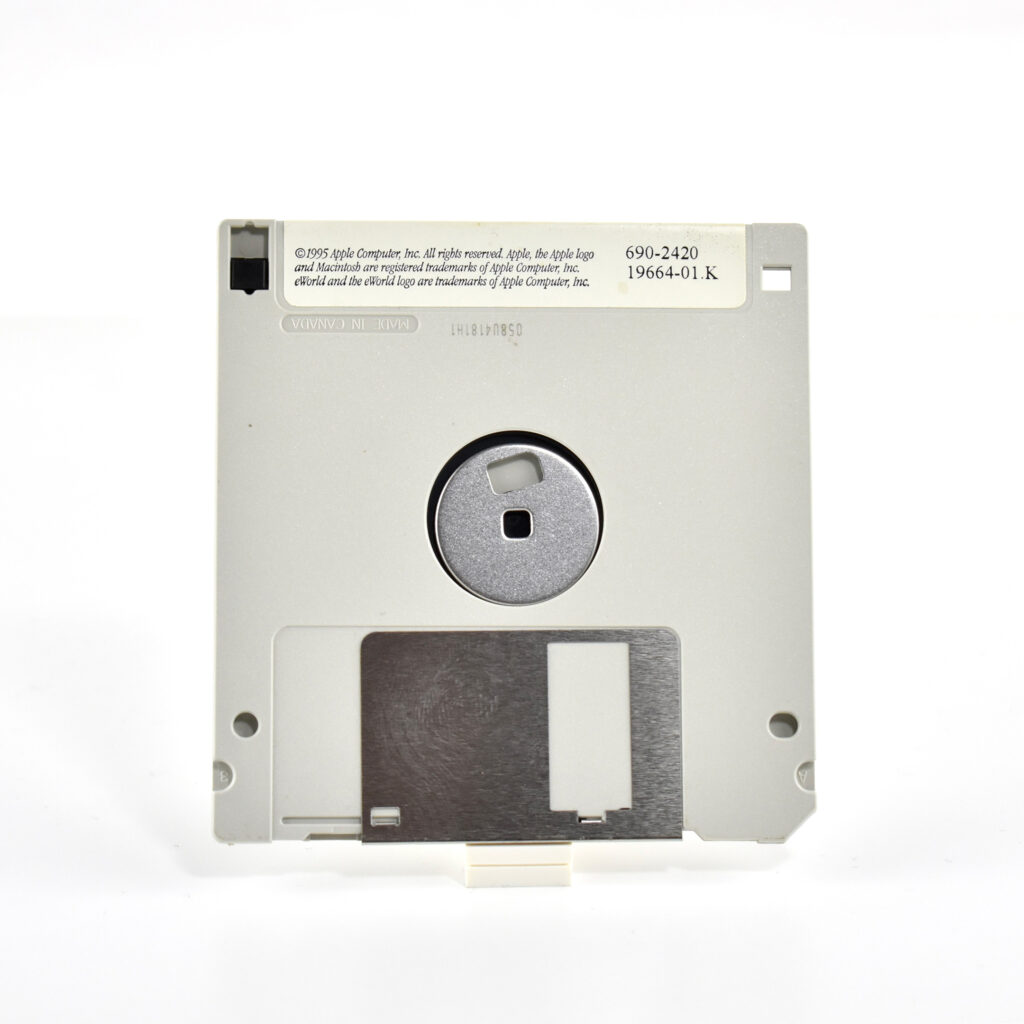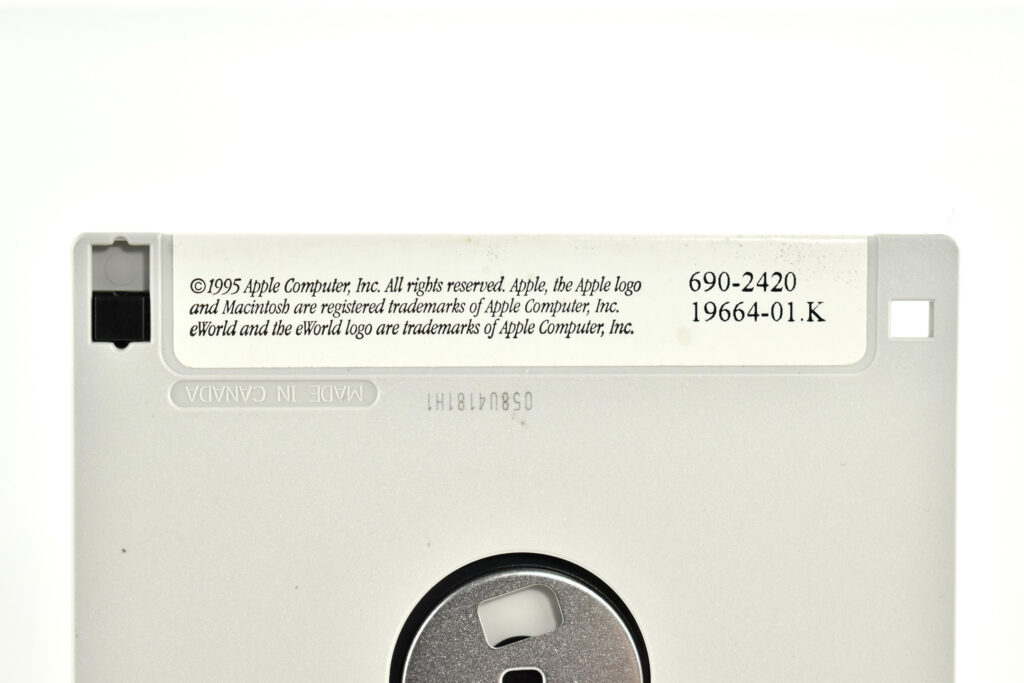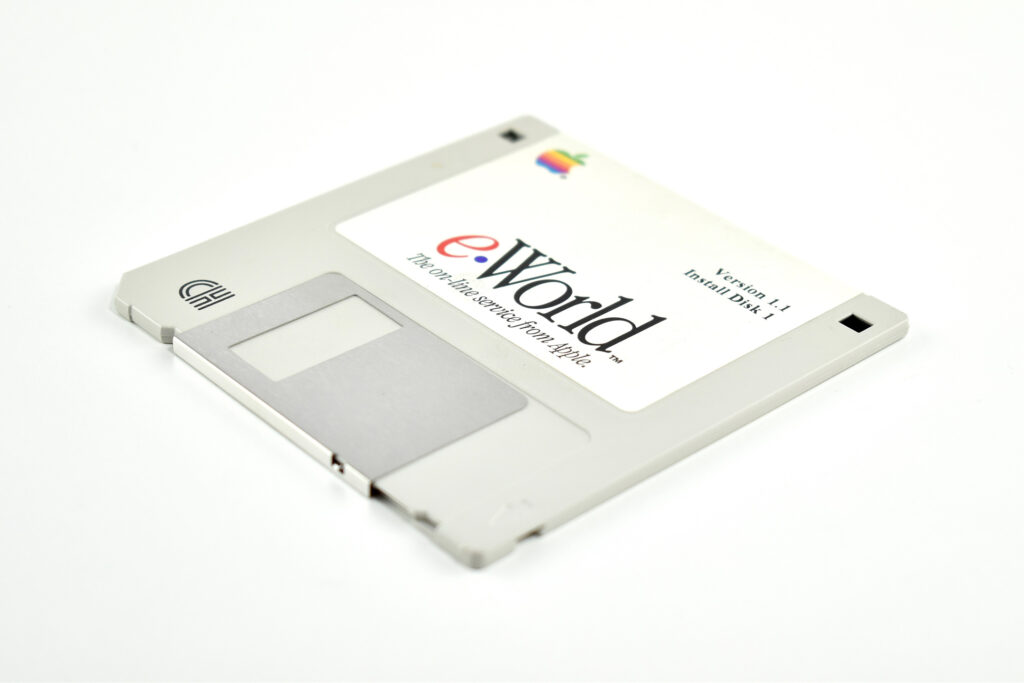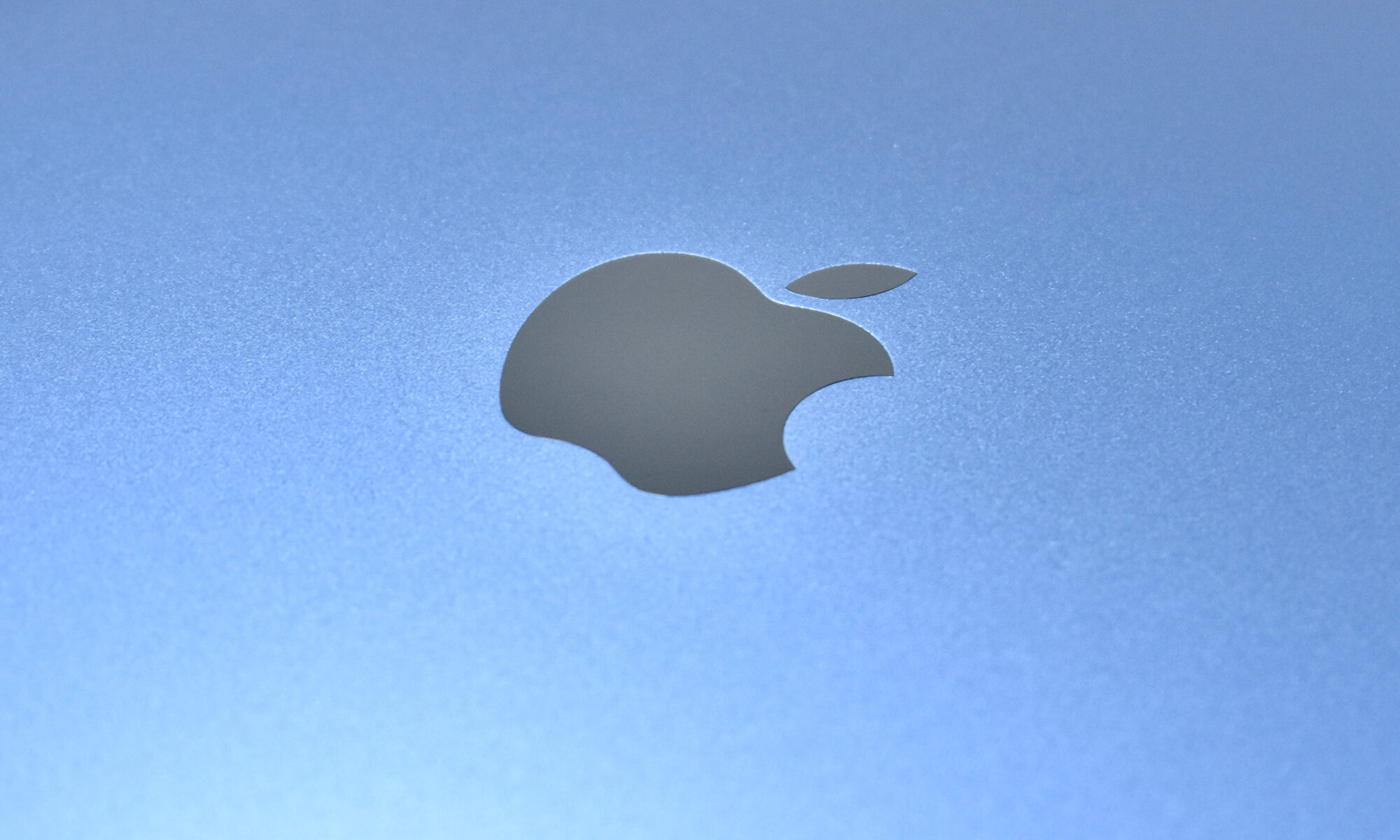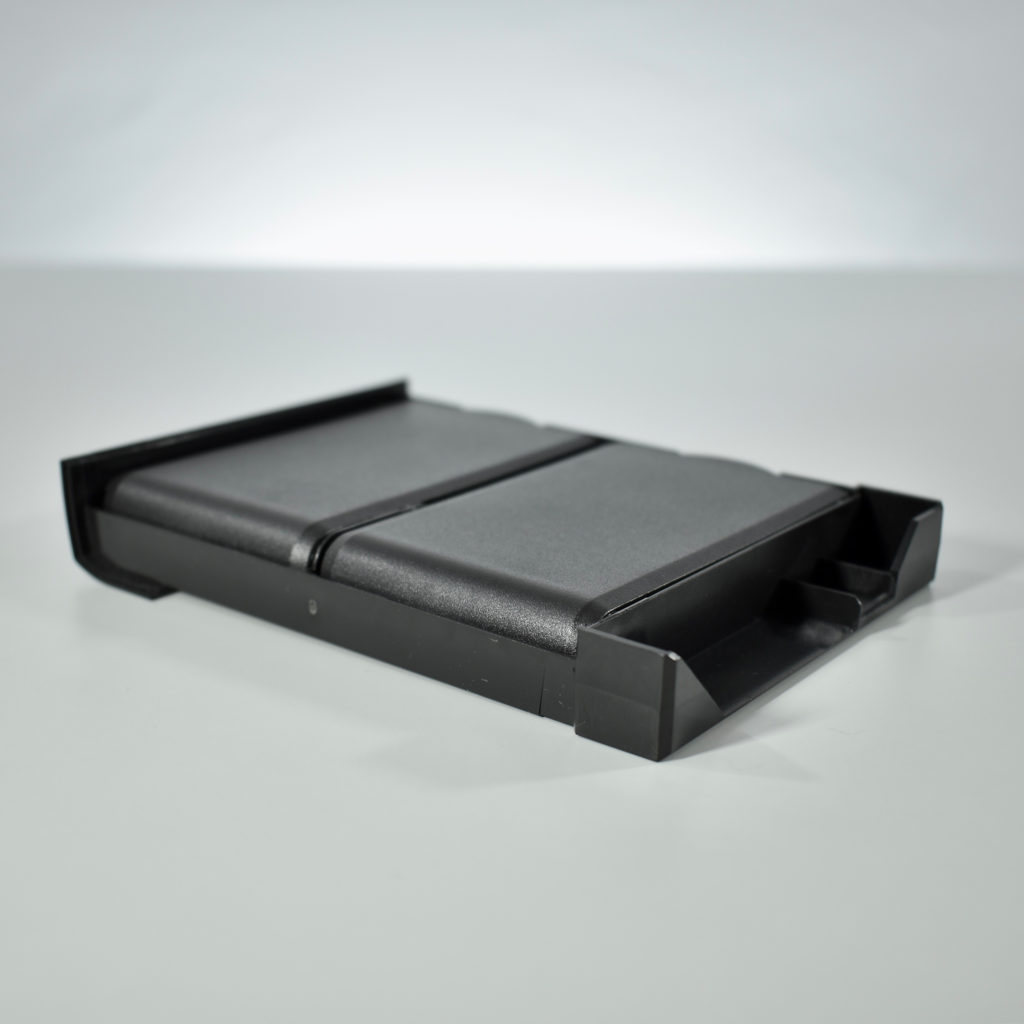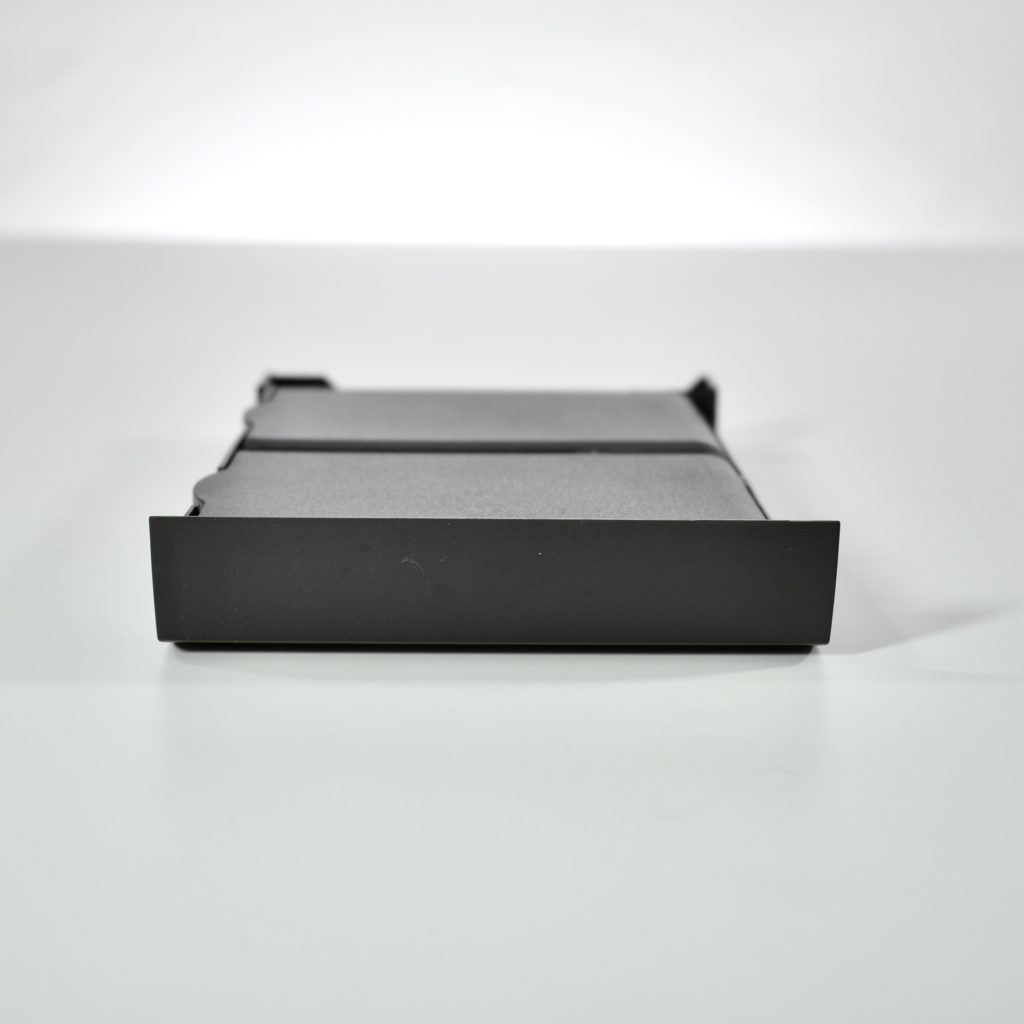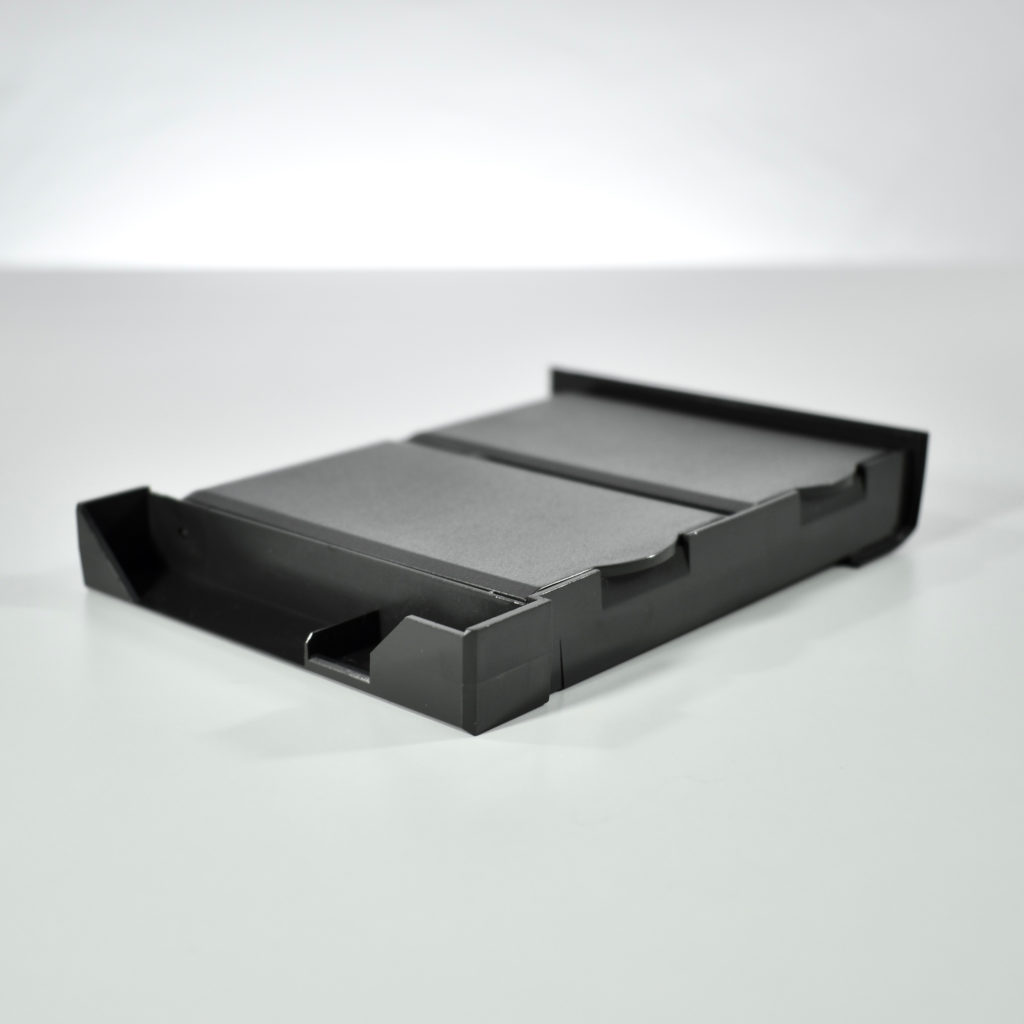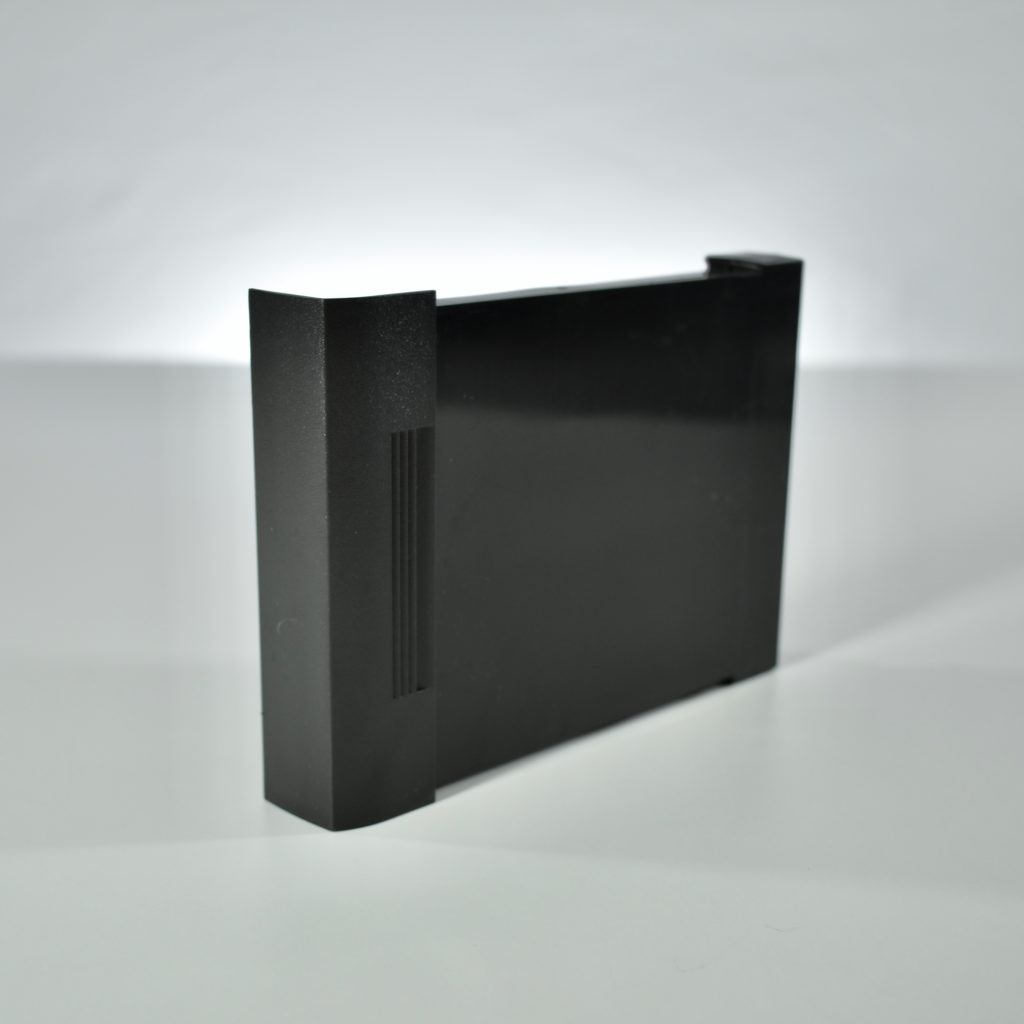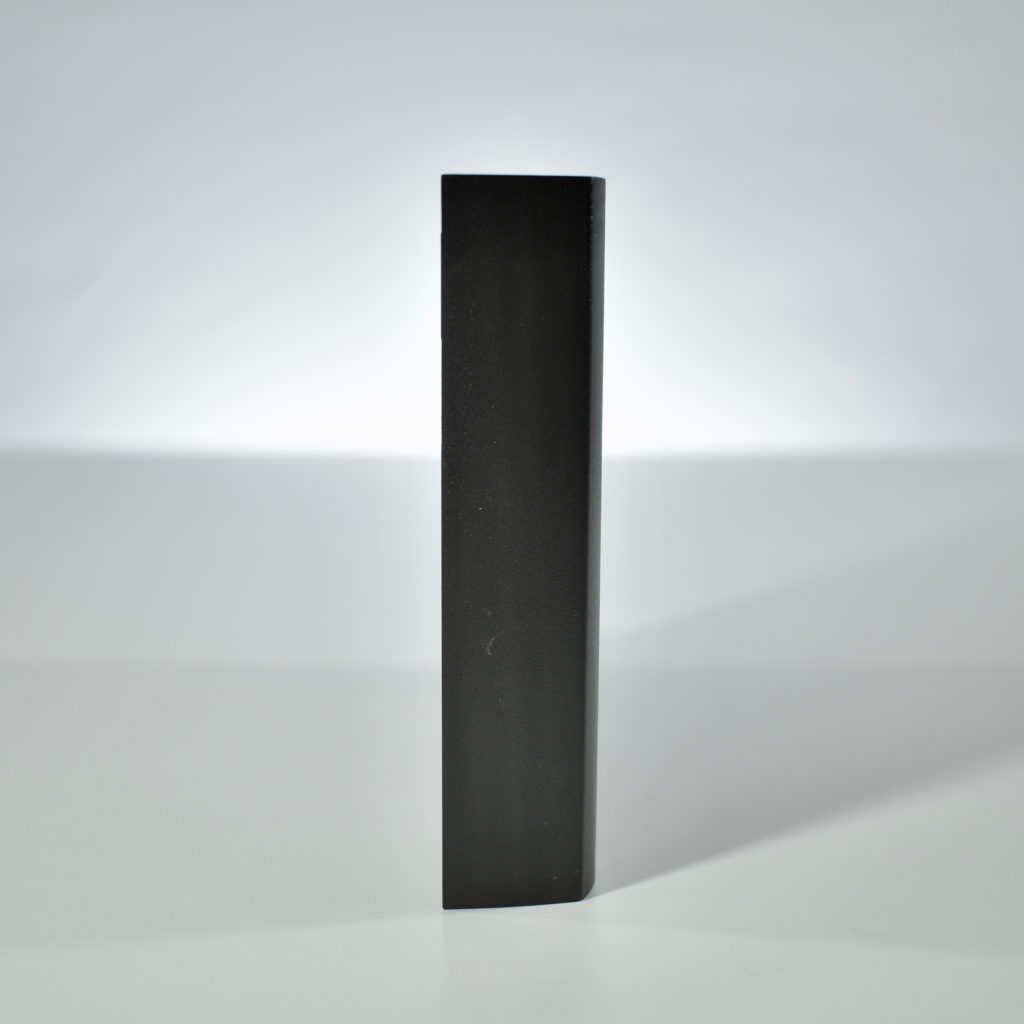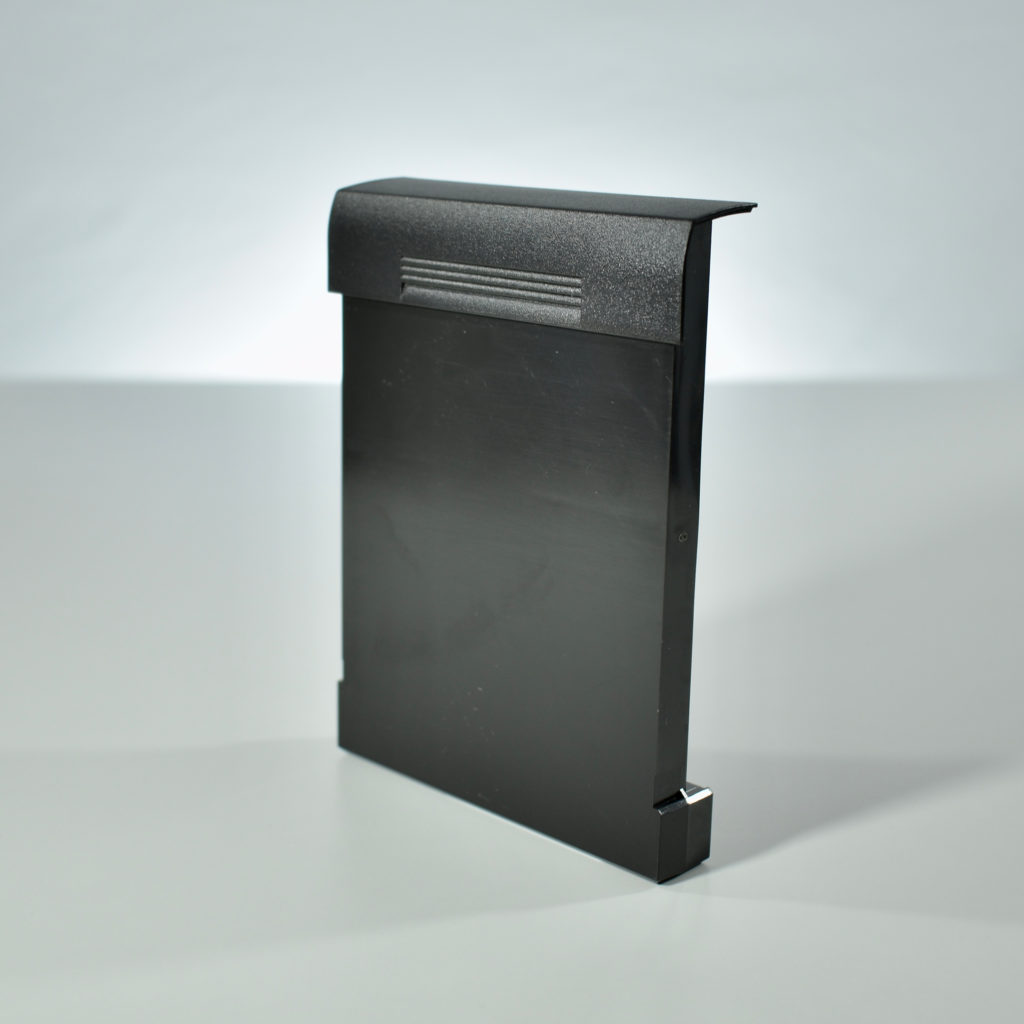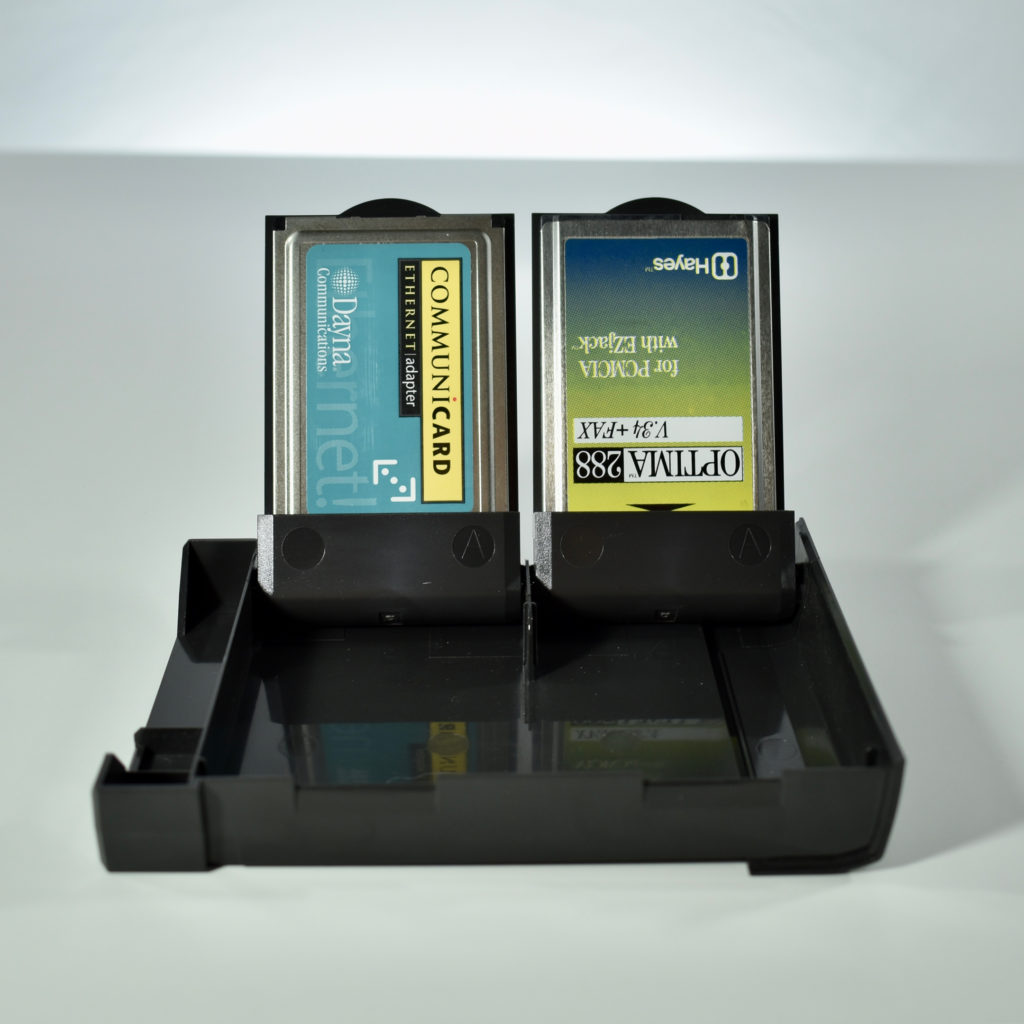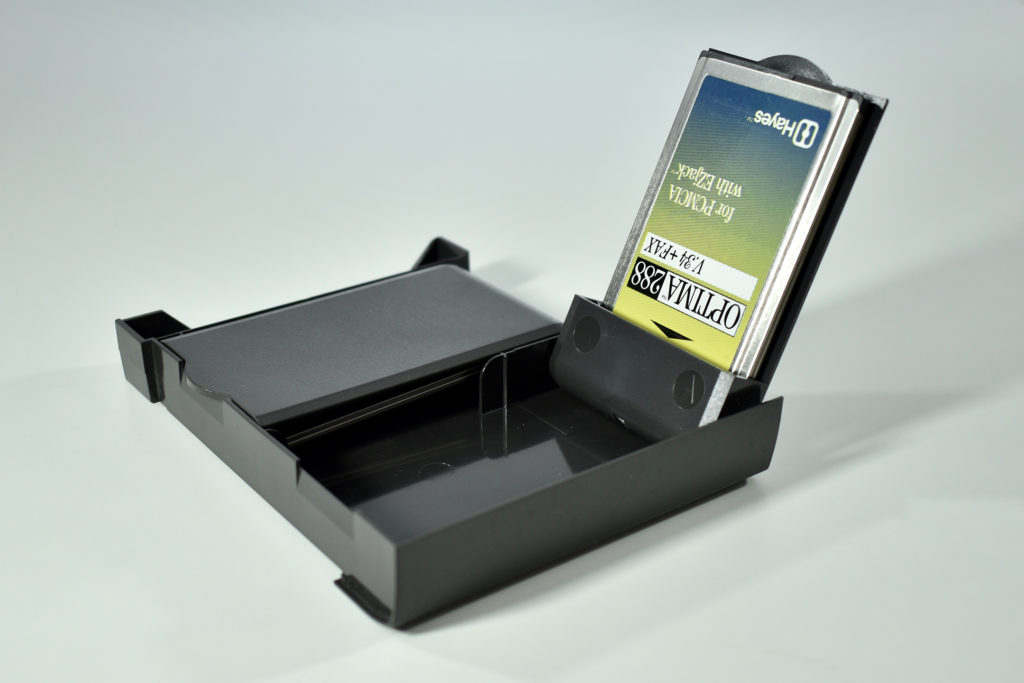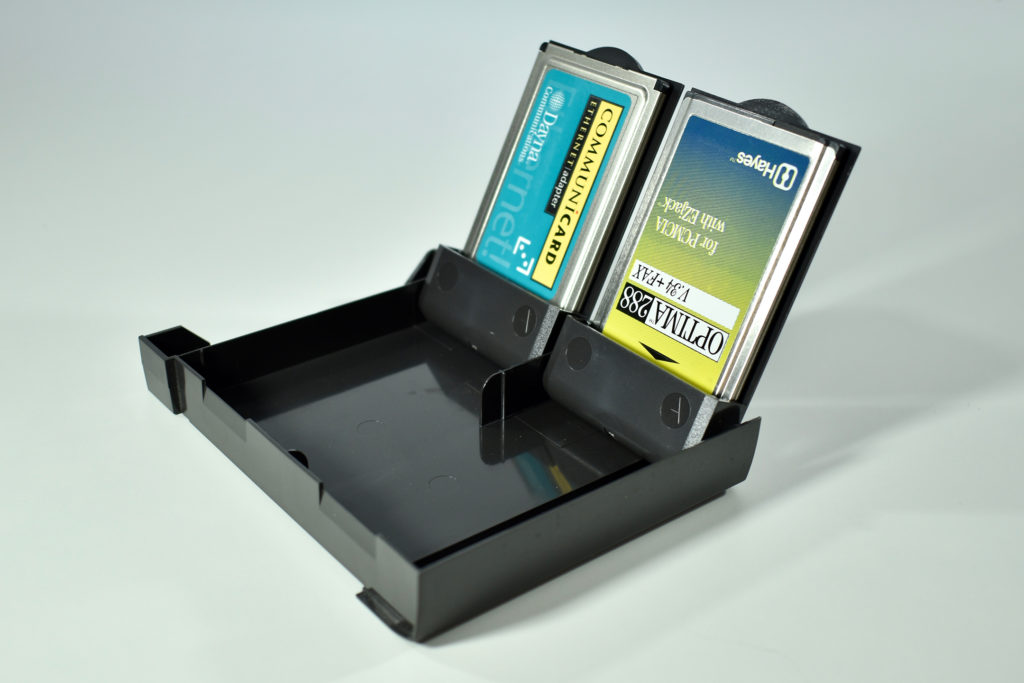eWorld was a relatively short-lived online service operated by Apple from June 1994—March 1996. eWorld’s services included email, news, a bulletin board system, and access to Apple software. According to the website, Remember eWorld, “eWorld competed directly against AOL, CompuServe, and MSN, and finally lost this competition.”
The service was available for Apple IIGS, Macintosh, and offered limited support for the Newton. Although AOL (America Online) was, by far, the most popular service of the time, Cult of Mac author Rob LeFebvre wrote fondly about eWorld, remembering, “When eWorld went online…the combination of real time chat and a distinct graphical style really made it stand out.”
Several historical references to eWorld noted its relatively high price. A Business Insider article reported that eWorld cost “$8.95 per month, which included two hours of evening or weekend use, with each additional hour costing $4.95.”
This 3.5-inch disk contains the software (Version 1.1) that allowed a Macintosh to access eWorld. According to TechNotif, “Users accessed eWorld through Apple’s custom client software and connected by way of a dial-up modem. Once you connected, the eWorld software displayed a playfully illustrated aerial view of a small city.”
Sources: Wikipedia, Remember eWorld, Cult of Mac, Business Insider, TechNotif
